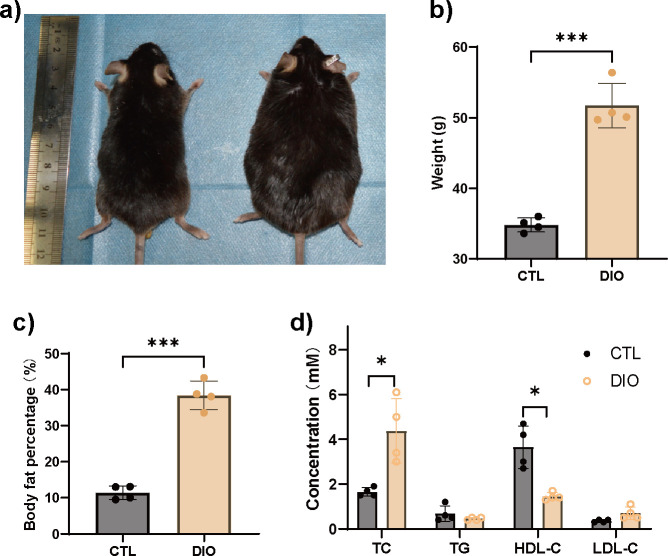Fig. 1.
Diet-induced obese (DIO) mice have metabolism disorders. a) to c) Significantly increased body fat content as determined by dual-energy X-ray absorptiometry (DXA) (n = 4). d) Analysis of serum biochemical indicators showed that DIO mice had metabolic disorders. Total cholesterol (TC) was significantly increased, while high-density lipoprotein cholesterol (HDL-C) was significantly decreased (n = 4). Data are expressed as means and standard deviations. *p < 0.05, ***p < 0.001 compared with CTL (independent-samples t-test). CTL, control; LDL-C, low-density lipoprotein cholesterol; TG, triglyceride.

